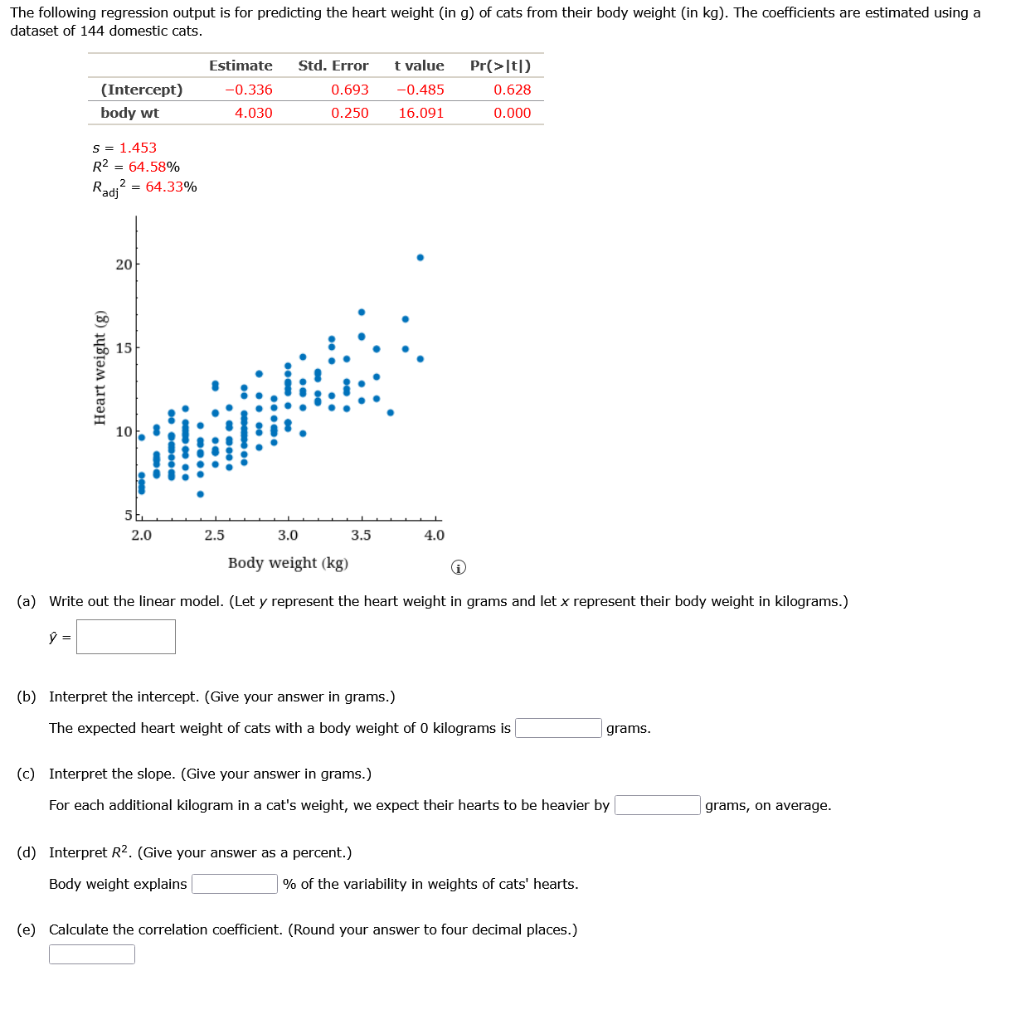Home /
Expert Answers /
Statistics and Probability /
the-following-regression-output-is-for-predicting-the-heart-weight-in-mathrm-g-of-cats-pa304
(Solved): The following regression output is for predicting the heart weight (in \( \mathrm{g} \) ) of cats ...
The following regression output is for predicting the heart weight (in \( \mathrm{g} \) ) of cats from their body weight (in kg). The coefficients are estimated using a dataset of 144 domestic cats. \[ \begin{array}{l} s=1.453 \\ R^{2}=64.58 \% \\ R_{\text {adj }^{2}}=64.33 \% \end{array} \] (a) Write out the linear model. (Let \( y \) represent the heart weight in grams and let \( x \) represent their body weight in kilograms.) \[ \hat{p}= \] (b) Interpret the intercept. (Give your answer in grams.) The expected heart weight of cats with a body weight of 0 kilograms is grams. (c) Interpret the slope. (Give your answer in grams.) For each additional kilogram in a cat's weight, we expect their hearts to be heavier by grams, on average. (d) Interpret \( R^{2} \). (Give your answer as a percent.) Body weight explains \( \% \) of the variability in weights of cats' hearts. (e) Calculate the correlation coefficient. (Round your answer to four decimal places.)
Expert Answer
we have to given that, y-intercept = -0.336 slope= 4.030 R-squred = 64.58% = 0.6458
